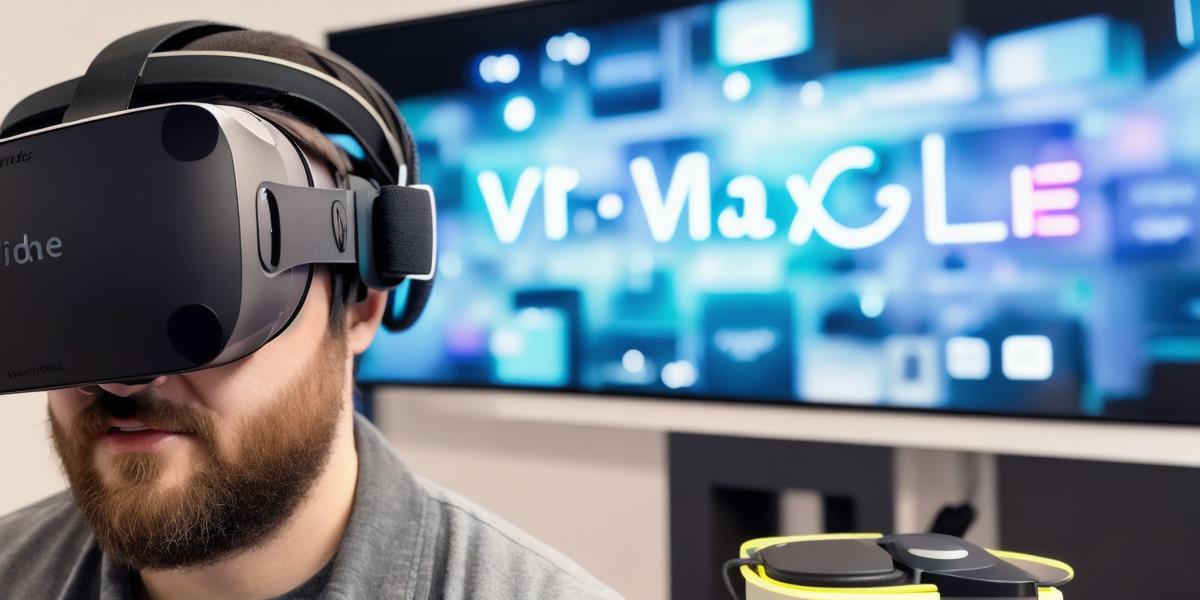As a VR developer, it is essential to understand the differences between augmented reality (AR), virtual reality (VR), and mixed reality (MR). Each technology has its unique features and applications that make them suitable for different use cases. In this article, we will explore these technologies in detail and help you choose the best one for your project.
Augmented Reality
AR is a technology that overlays digital information onto the real world. It allows users to interact with virtual objects in their physical environment, creating an immersive experience. AR has been used in various applications such as gaming, marketing, and education. For example, AR-enabled apps like Pokémon Go allow users to catch virtual creatures in real-world environments.
Virtual Reality
VR is a technology that creates a completely artificial environment for the user. It immerses the user in a simulated world, providing a highly engaging experience. VR has been used in gaming, entertainment, and education. For example, VR headsets like Oculus Rift allow users to explore virtual worlds or practice skills in a safe environment.
Mixed Reality
MR is a technology that combines AR and VR, allowing users to interact with both real and virtual objects. It provides a more seamless experience by blending the two worlds together. MR has been used in various applications such as architecture, manufacturing, and entertainment. For example, MR-enabled apps like HoloLens allow architects to visualize 3D models in real-world environments.
Case Studies
One of the best ways to understand these technologies is through case studies. Let’s look at a few examples:
- IKEA Place – An AR app that allows users to see how furniture would look in their home before buying it.
- VR Games – Virtual reality games like Beat Saber and Resident Evil have become incredibly popular, providing an immersive gaming experience.
- MR-Enabled Architecture – A company called ArchosVR has developed a tool that allows architects to visualize 3D models in real-world environments using MR technology.
Choosing the Right Technology
When choosing between AR, VR, and MR, it is essential to consider the specific use case of your project. Here are some factors to consider:
- Interaction – If you need users to interact with real-world objects while using virtual elements, AR is the best choice.
- Immersion – If you need to create a completely immersive experience and block out the real world, VR is the best choice.
- Cost – AR technology is typically more affordable than VR and MR, making it a good option for smaller projects.
- Complexity – VR and MR are generally more complex technologies than AR, requiring specialized equipment and expertise.
FAQs
What is the difference between AR, VR, and MR?
AR overlays digital information onto the real world, VR creates a completely artificial environment, and MR combines both technologies to provide an immersive experience.
When would I use AR, VR, or MR?
AR is best for projects that require users to interact with real-world objects while using virtual elements. VR is best for creating a completely immersive experience. MR is best for blending the two worlds together and providing a more seamless experience.
How much does AR, VR, or MR equipment cost?
AR technology is typically more affordable than VR and MR, making it a good option for smaller projects. VR and MR require specialized equipment and can be expensive.
What kind of expertise is needed to use AR, VR, or MR?
VR and MR are generally more complex technologies than AR, requiring specialized equipment and expertise.
